Being spontaneous works for many things, but camping isn’t one of them.
You can’t just name a spot, throw a few things in a bag, and hit the road.
An enjoyable camping trip requires a bit of planning. But where to begin?
Don’t worry, we’ve done this a hundred times, so we’ll show you how to plan a camping trip like a pro.
Step 1: Pick A Location
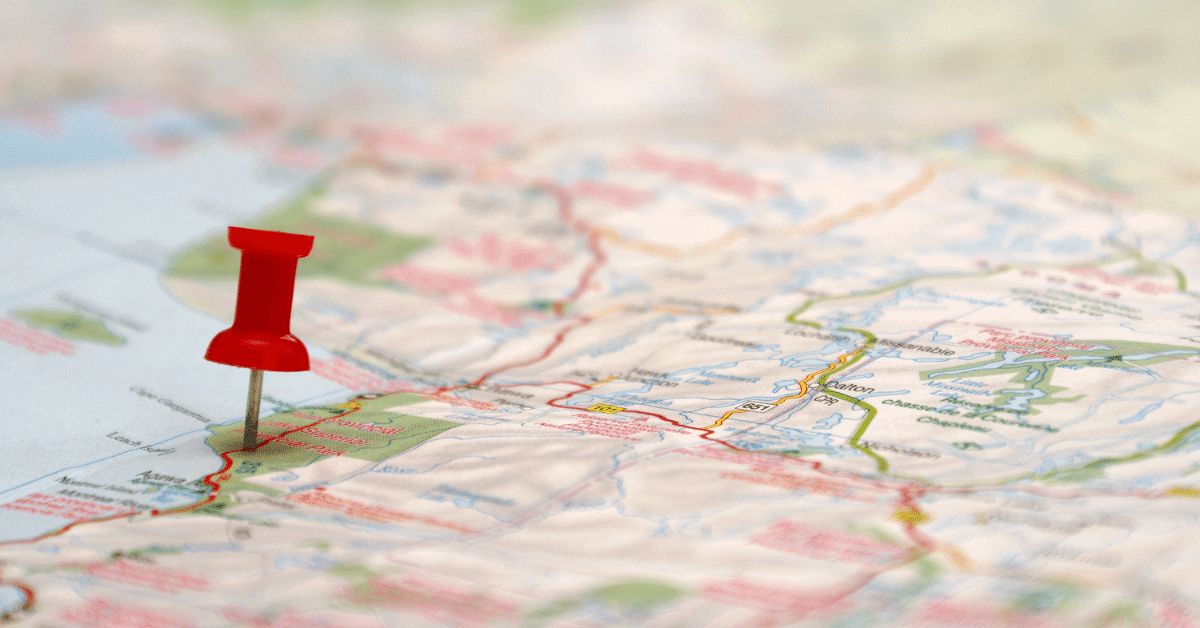
From mountains and blackwater swamps to deserts and rocky cliffs, the United States has it all. The choices are endless, so picking a location is not an easy task.
Pinpointing a random destination on a map might be fun, but it’s definitely not a practical way of choosing where to go for a camping trip.
Instead of blindly deciding on a place, there are some factors you should consider.
These include:
- How you plan on getting to the campsite
- Whether you’re interested in a developed campsite or dispersed camping
- What kind of activities you want to do on your trip
- Is it camping season and is the campsite you’re interested in even open?
Here’s how answering these questions can help you decide on a camping location:
Getting To The Camping Spot
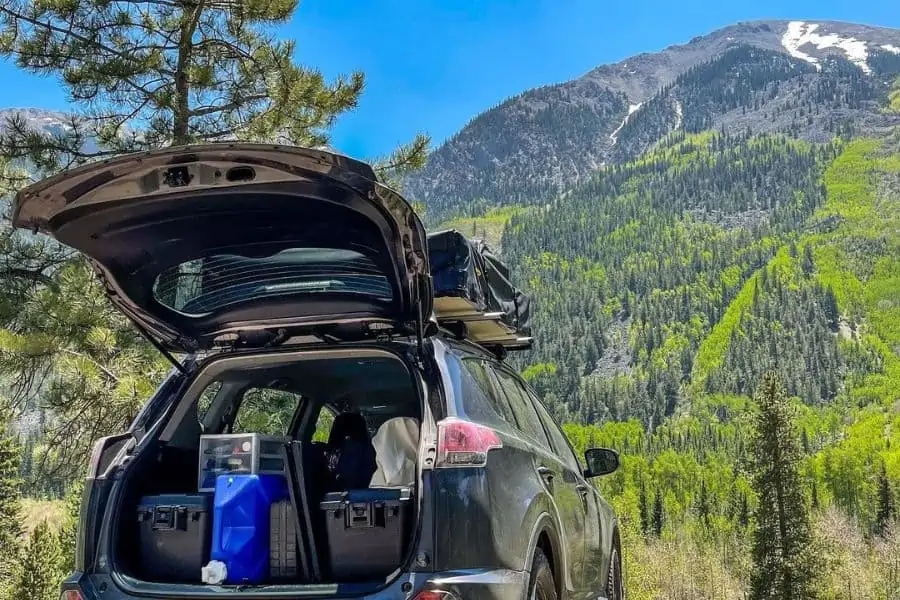
One of the main factors that affect the choice of destination is transportation.
A car is definitely the most convenient option. You can drive up to basically any location you choose, and leave whenever you want.
You can even turn it into a road trip and visit several locations on the same camping trip.
What’s more, you don’t have to stress about packing camping essentials and staying light at the same time. You can bring practically anything you need, whether it’s your pillow, favorite camping chair or a large portable fridge.
If you don’t own a car, your options are limited. But that doesn’t mean you don’t have any!
In fact, there are some pretty amazing spots that are accessible via public transportation.
For instance – New York City is not the first place that comes to mind when you think about camping. But, you can enjoy a tranquil outdoor experience at camp Gateway, right in the middle of Brooklyn!
Birdwatching, canoeing, hiking… You can enjoy all that just 15 miles away from the Statue of Liberty.
Developed Or Dispersed Camping?
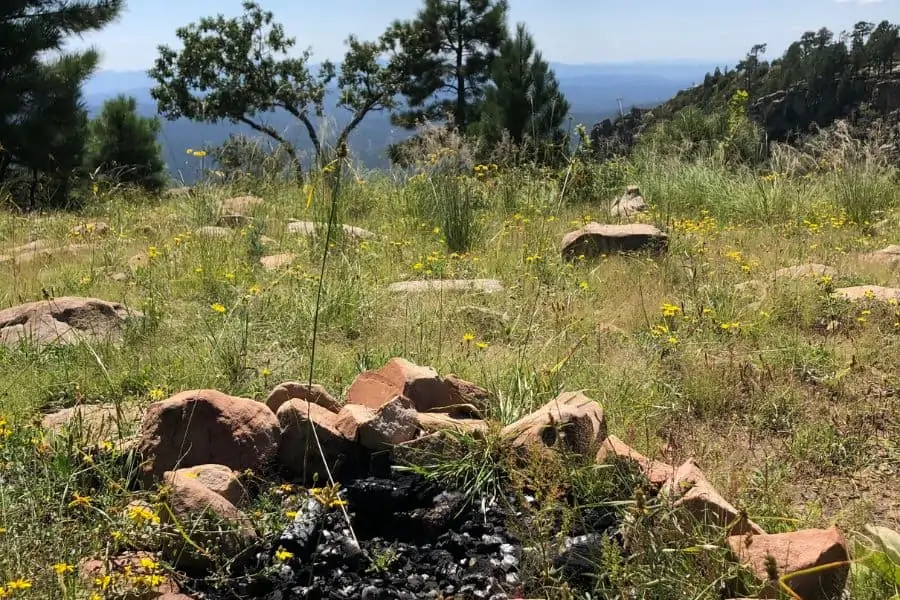
After you’ve decided on your means of transportation, it’s time to pick a place.
A developed campground allows you to pay to have amenities like a toilet and an electricity source.
If you opt for this option, you should check out online reviews first. They’ll give you a general idea of the place without having to experience it first-hand.
If you’re RV camping, you should know that not all campsites allow camper trailers. Make sure to check that before booking a campground.
And then, there’s dispersed camping, or free camping, which is my favorite. There are numberless places to choose from. If you want a true outdoor experience, backcountry camping is definitely the best way to have it.
Before you decide on a location, you need to do some research as well. While you’re generally allowed to camp for free in US national forests and grasslands, each of them has slightly different rules. You should check them out prior to choosing the location.
Read: Types of Campsites: Our Guide to Campsites, Campgrounds & Camping Amenities
What Kind Of Activities Are You Interested In?
What fun stuff are you planning on doing during your camping trip?
It could be hiking, kayaking, wildlife spotting or even mountain biking.
You should definitely consider having access to these outdoor activities near your campsite.
So for instance, choose a campground near the water if you like fishing or kayaking. If you enjoy sightseeing, go somewhere high up in the mountains.
More: 65+ Camping Activities For Adults & Kids Of All Ages
Step 2: Check Your Calendar & The Weather
Since you’re planning on spending a few days outdoors, having good weather is a big deal.
You want to be able to leave your tent, don’t you?
When planning a trip, do some research about the climate in your camping location of choice.
Say for instance you’re planning on camping in the Olympic National Park. You should be aware that the annual precipitation goes up to 170 inches of rain in some areas.
This means you should definitely avoid camping there in fall, winter, and early spring. Well, unless you want to swim in rain puddles.
On the other hand, that time of the year is ideal for camping in the desert. In summer, the temperature can go well above three digits. But during colder months of the year, you can enjoy the breathtaking desert scenery without dripping in sweat.
Just keep in mind that nights in the desert are way colder than the days. So whichever location you pick, you need to be prepared for serious temperature drops at night.
More: Best Time to Go Camping (For EVERY State)
Step 3: Make A List
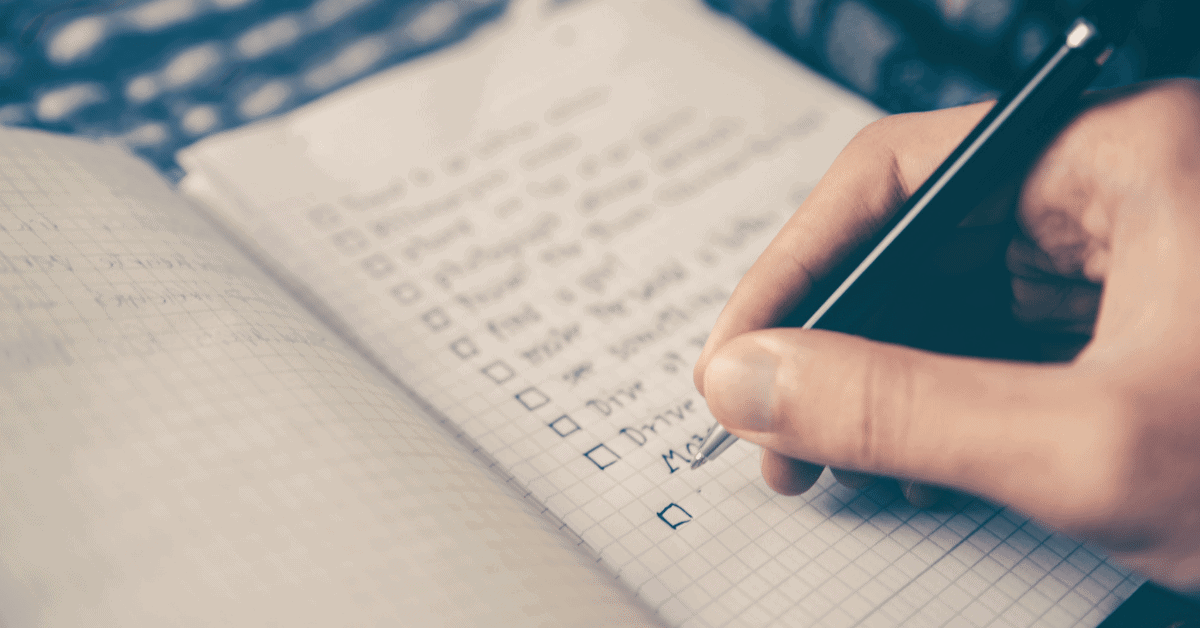
I didn’t used to be the kind of person who makes lists to avoid forgetting something.
I’d always overestimate my ability to remember to pack everything I needed.
And as you might expect, that never turned out to be a smart move.
The time that I forgot to pack tent stakes and had to improvise was a game-changer.
Since then, I always make a list of the things I absolutely need for a camping trip. Or you can always use our camping list here.
Then, if there’s any storage room left, I can think of other things that might be useful – like a camping chair or a table.
So what should be a must on your camping checklist?
Download Our FREE Camping Checklist
Shelter
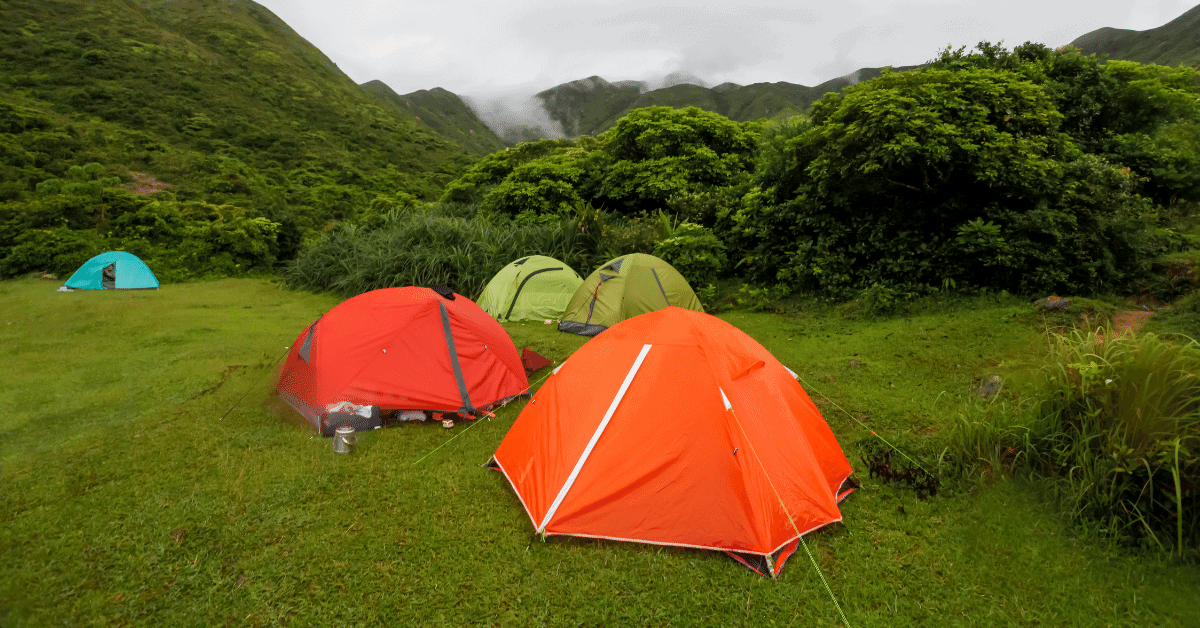
The first one is a camping tent.
You need a place to sleep, right?
Make sure to pick a tent that’s suitable for the season you’re camping in.
While a cheap tent might work during warm summer nights, it won’t get you far in colder weather.
If there’s even the slightest chance of rain, you’ll need a quality waterproof tent. In fact, pack a tarp as well. You can never be too safe.
If you’re feeling adventurous, you can choose a hammock over tent camping.
This is great if you’re going to the woods and you like to pack light. But if you’re camping on a beach or in the desert, you won’t get much use out of the hammock. So if you’re headed somewhere where there aren’t many trees around, I’d stick to tent camping.
More: Camping Tent Sizes – What Size Tent Do I Need?
Sleeping Bag
When it comes to sleeping bags, the same rule applies – pack one that’s suitable for the weather conditions and temperatures at that time of the year.
Sleeping in nature is no joke. The temperature drop at night is way bigger than what we experience in the city, especially if you’re camping at higher altitudes.
The temperature rating of a sleeping bag tells you the temperature you can use it at and survive – not be comfy. That’s why you want to go a bit lower if you want to stay nice and cozy.
Choose a sleeping bag with a temperature rating at least 15 degrees lower than the temperature you’re expecting during your camping trip. If you want to be on the safe side, go with a sleeping bag that has an even lower rating.
If you’re car camping, you can afford to bring an extra blanket or two. This will give you some extra comfort during cold nights.
More: How To Choose A Sleeping Bag: Your Guide to Cozy Outdoor Slumber
Sleeping Surface
There are three options available: a camping cot, a sleeping pad, or an air mattress.
A camping cot keeps you off the ground and away from insects. It’s great for summer nights, but since there’s no insulation, so it’s not a good choice for colder months.
It’s also bulky, so it’s only suitable for car camping.
A sleeping pad might not be as comfy, but it’s well insulated making it the best choice for winter camping. What’s more, it’s compact and can even be used in a hammock.
Finally, an air mattress wins the battle of comfort. But it’s not a great insulator, meaning you’ll be cold when the temperature drops.
More: Complete Guide to Sleeping Pad R-Value (Charts by Season, Temperature & More)
Step 4: Meal Planning
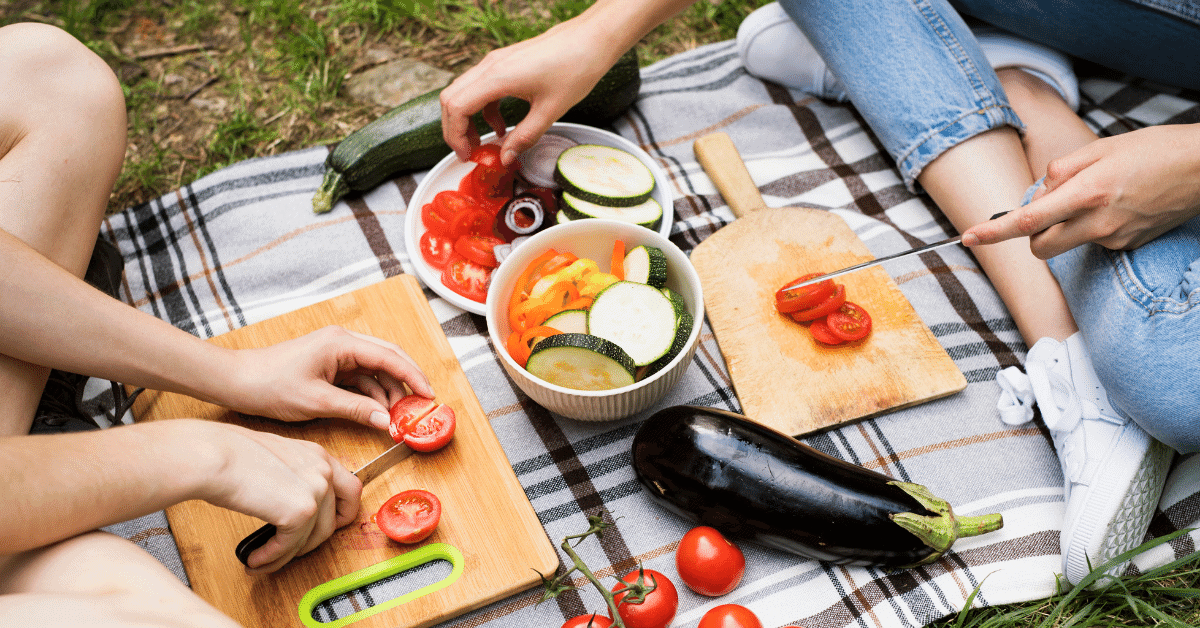
Chances are that the closest grocery shop is miles away from your campsite, so you can’t just run to grab a missing ingredient in the middle of cooking.
That’s why you’ll have to plan your meals in advance.
This might sound complicated, but the reality is far from it.
First, you need to pack some cookware. With the right tools, you can cook practically anything.
If you’re camp cooking over an open fire, go for cast iron.
But if you’re using a camping stove, then any type of cookware will do.
But which cookware items should you pack?
Think about what meals you want to make.
Pasta? You definitely need a saucepan.
Pancakes? Pack a skillet.
Burgers? A grate is what you need.
Don’t forget about the utensils either – skewers, tongs, serving spoons, etc. The same goes for plates and cutlery.
Also See: 10 Must-Have Utensils for Your Next Camping Trip
You can save yourself some time and effort by preparing your ingredients at home.
For instance, you can chop up veggies and marinate meat. Then at the campsite, all you have to do is take it out of the container and throw it onto the fire.
You should also plan your drinks in advance.
If you’re wild camping, drinking water isn’t easy to come by. If there’s a natural source nearby, you can filter it and make it drinkable. But if not, you’ll have to pack enough bottled water to last you the entire trip.
Then, if you like to sip coffee or tea in the morning, you’ll definitely need a mug. You can boil the water on a campfire or a stove, or you can bring a kettle if you can spare some room.
Finally, once you’re done eating, you’ll need to wash the dishes. A sponge and dish soap are a must. Just make sure to pick a biodegradable one.
More: 32 Delicious & Easy Camping Dinner Ideas + Sides, Salads & Desserts
Step 5: Plan Your Outfits

There’s a pretty good chance the weather will be colder than you expect. Even if you check the weather forecast before you go, you need to be prepared for the unexpected.
The best way to do that is to dress in layers. If it gets warmer, just take something off. If the temperature drops down, put another layer on.
At the very least, you should have a set of wool socks, underwear, a wool sweater, a warm jacket, a hat and some kind of waterproof cover like a poncho or rain jacket.
If you plan on doing some specific outdoor activities, pack appropriate outfits for those too.
So for instance, you’ll need good hiking boots if you plan on hitting up the trail. On the other hand, if you go kayaking in cold waters, you may need a wetsuit.
Step 6: Safety Gear
Not to sound like a pessimist, but a lot of things can go wrong at a campsite.
Now, I don’t mean like a meteor-falling-on-you kind of wrong. But your tent might get ripped, you could bruise a knee or maybe have a flat tire.
These are all nuisances, but not the end of the world.
The first safety measure you need to take is bringing a first aid kit.
There wasn’t a single camping trip that I’ve managed to live through without at least a tiny cut. Being as clumsy as I am, that’s to be expected.
But since I always have a first aid kit with me, I can dress my wounds and continue on with the outdoor activities.
The second thing you need is duct tape. It takes up practically no storage space and can fix anything from a ripped tent to a shoe sole that’s falling off.
Finally, if you’re car camping, don’t leave for the wilderness without a tire repair kit. Road assistance might be miles away, and a simple kit can save you both time and money.
More: 8 Camping Safety Tips Every Adventurer Should Know
Step 7: Don’t Wait The Last Minute To Pack
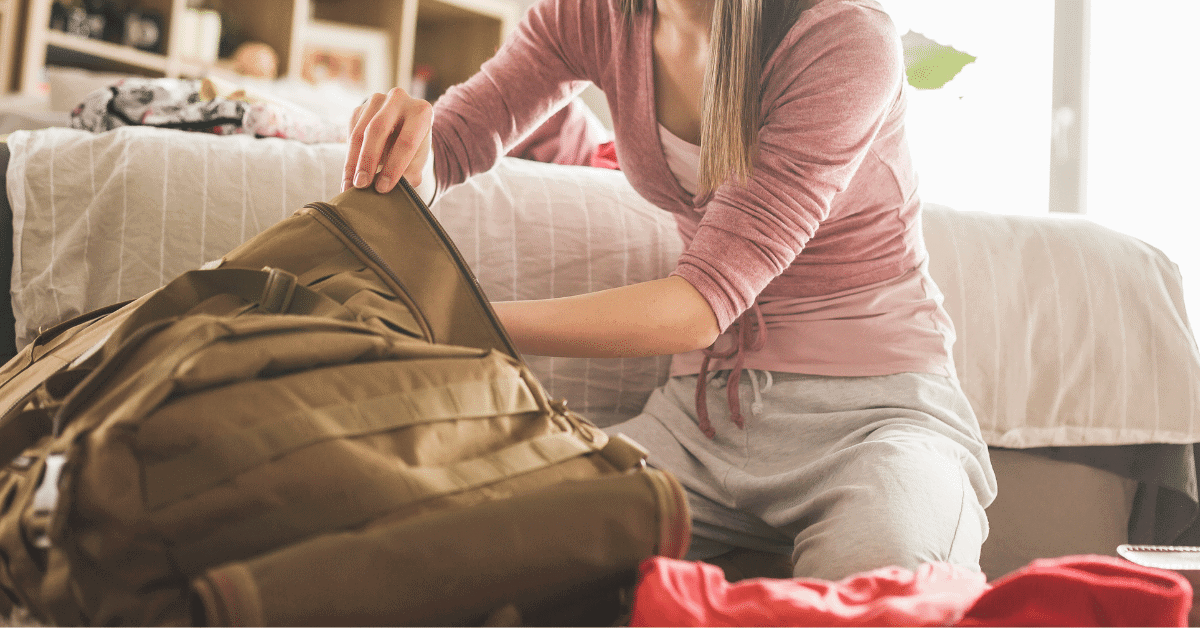
Being the master of procrastination, I’ve done my fair share of packing under the wire.
That often ended with me hitting Walmart at 3 AM in a frenzy to buy something I’d forgotten I was out of.
Moral of the story?
To avoid frantically driving around the city shopping for missing equipment, plan to start packing at least two days in advance.
You’ll also want to make sure that you can fit all your gear in your car(s) too!
Wrapping Things Up
As you can see, planning a successful camping trip is not rocket science.
But, it still requires you to sit down and do some research. Then, you need to decide on things to pack based on the date and location of your camping trip.
Most importantly, you should never wait until the last minute to do your planning and packing.
Doing it right requires time. But as long as you follow these steps, you can rest assured you’ll be well prepared for any camping trip.
Next Up: Camping Etiquette: Understanding the Rules of Camping for a Positive Outdoor Experience
More Camping Tips


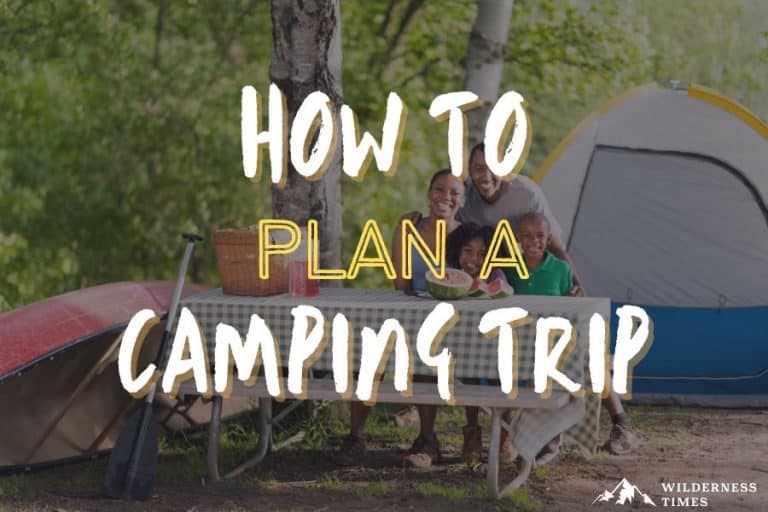
1 thought on “How To Plan A Camping Trip Like A Pro In 7 Simple Steps”
Camping can be fun for first timer. But
Need to decide the type of camping
Glamping, primitive , isolation adventure, and recreational vehicle .
Where there showers , flush toilet, electricity , and drinking water
That glamping for the women needs
Roughing it drinking water ,and smelling
Pit toilets that primitive . RVing should be for family with. kids as it protects
From animals who are looking for food
Won’t cause a nuisance at. The campsite
Camping ⛺️ where no one has been there
Is a rare place. The only things to deal
Is the insect 🐜 on the ground and flying
And pack in your equipment and out
Of area . It is. Better to have-a pretrial
Camping ⛺️ weekend so that you know what work s and need to improve on